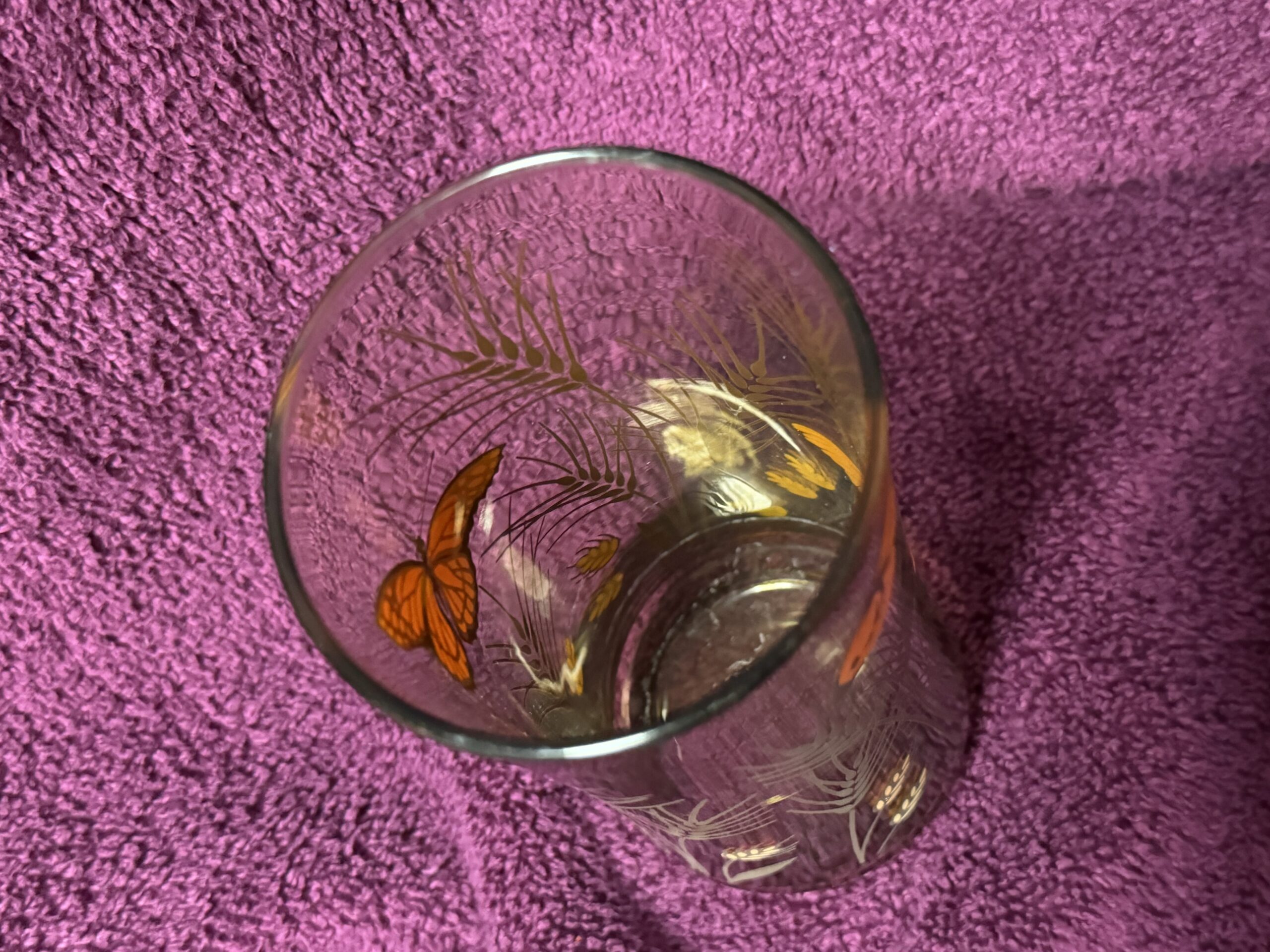XRF test results for amber drinking glass with orange butterfly pattern — sent by Karlie in Utah

For those new to the Lead Safe Mama website:
Tamara Rubin is a multiple-federal-award-winning independent advocate for childhood Lead poisoning prevention and consumer goods safety, and a documentary filmmaker. She is also a mother of Lead-poisoned children (two of her four sons were acutely Lead-poisoned in 2005).
- Tamara owns and runs Lead Safe Mama, LLC — a unique community collaborative woman-owned small business for childhood Lead poisoning prevention and consumer goods safety.
- Since July of 2022, the work of Lead Safe Mama, LLC has been responsible for five product recalls (FDA and CPSC).
- All test results reported on this website are science-based, accurate, and replicable.
- Please check out our press page to see some of the amazing coverage of our work so far this year!
In the interest of publishing quite a few test results quickly, we will be updating this article with more information shortly. For context: As of 2011, anything over 90 ppm Lead (in the paint, glaze, or coating of an item) is considered unsafe and illegal in items intended for use by children. Dishes are not considered items intended for use by children (on a U.S. federal level), so this level of Lead (in the glaze) on a food-use item is not illegal.
Reading #1) 60-second test
(repeated multiple times to confirm results)
Unpainted area of glass
- Lead (Pb): non-detect
- Cadmium (Cd): non-detect
- Mercury (Hg): non-detect
- Bromine (Br): non-detect
- Chromium (Cr): non-detect
- Iron (Fe): 154 +/- 91 ppm
- Nickel (Ni): 274 +/- 57 ppm
- No other metals were detected in consumer goods mode.
Reading #2) 60-second test
(repeated multiple times to confirm results)
Area of glass with orange butterfly
- Lead (Pb): 101,700 +/- 3,300 ppm
- Cadmium (Cd): 7,142 +/- 385 ppm
- Mercury (Hg): non-detect
- Bromine (Br): non-detect
- Chromium (Cr): 5,617 +/- 607 ppm
- Manganese (Mn): 522 +/- 272 ppm
- Iron (Fe): 852 +/- 191 ppm
- Nickel (Ni): 872 +/- 126 ppm
- Zinc (Zn): 2,608 +/- 130 ppm
- Selenium (Se): 899 +/- 81 ppm
- Titanium (Ti): 16,800 +/- 1,700 ppm
- Zirconium (Zr): 206 +/- 24 ppm
- Platinum (Pt): 447 +/- 189 ppm
- No other metals were detected in consumer goods mode.



Never Miss an Important Article Again!
Join our Email List







I appreciate you testing my glass! I had a feeling it would have lead in it due to the time period. I will be making the glasses a decor piece to remember my grandma by. I’m so mad that the government and big business doesn’t care about lead the way it should. You are doing good work! We all appreciate you very much.